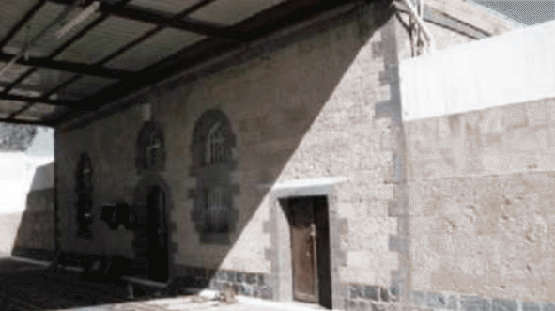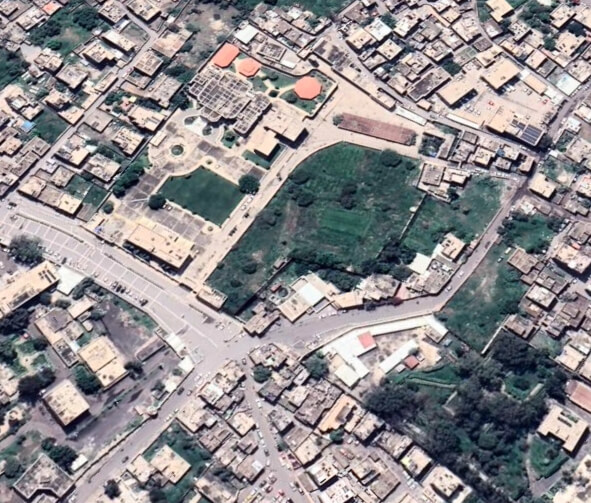
Al-Hādī Mosque – Ṣan‘ā’
مسجد الهادي – صنعا ء
Monument description
The Al-Hādī Mosque is a prominent archaeological monument in the city of Sana‘a, located in the Bir Al-Azab neighborhood, west of the city. It was built by Imam Al-Hadi Muhammad Al-Mutawakkil on the 19th of Dhul-Hijjah of the year 1259 AH. Historical records reveal that the primary construction of the Mosque, as well as its additions, have been done in several stages.

Architectural and cultural value
Construction style and built date: The layout of the Mosque follows the style of Mosques presenting a tiled Prayer Hall, with a flat roof covered by wooden beams resting directly on the capitals of stone columns and arches. The monument was built on the 19th of Dhul-Hijjah of the year 1259 AH.
Components of the Mosque: Prayer Hall, small Minaret, Al-Manzilah, Berkah, Ablution Units, Sabil and traditional baths.
- Justifications for intervention:
- 1. The building has been neglected for lack of funding
- 2. Preserving the monument and preventing further damages
- 3. Restoration of damages to the Mosque resulting from the air strikes to the northern part of the Old City of Sana‘a
- 4. Contribute to the restoration of damaged monuments in a proper manner in order to keep Old Sana‘a in the World Heritage List
- Monument conditions:
- Damages resulting from old building techniques, previous inadequate restoration and repairs, and the passage of time, in particular damages resulting from water leakage. Damages resulting from old building techniques, previous inadequate restoration and repairs, and the passage of time, in particular damages resulting from water leakage. These damages include:
- 1. Cracking of a material known as Qadad in the water pool, walls and surfaces in general
- 2. Cracks on the roof of the Prayer Hall
- 3. Problems linked to subsidence, moisture and salinity in the foundations
- 4. The collapse of some parts of the stone walls of the settlements and the northern gate of the pond.
- Treatment:
- – Restoration and re-layer the affected areas with Qudad. Re-dressing and building the rainwater drainage on the northern façade
- – Restoration and re-layer the affected areas with Qudad. Re-dressing and building the rainwater drainage on the northern façade
- – Reconstruct of the dilapidated wall.
- – Repair of the longitudinal crack
- – Treatment of the damaged foundations and solving the problem of moisture
- – Treating roofs and preventing rainwater intrusion.

Countries













